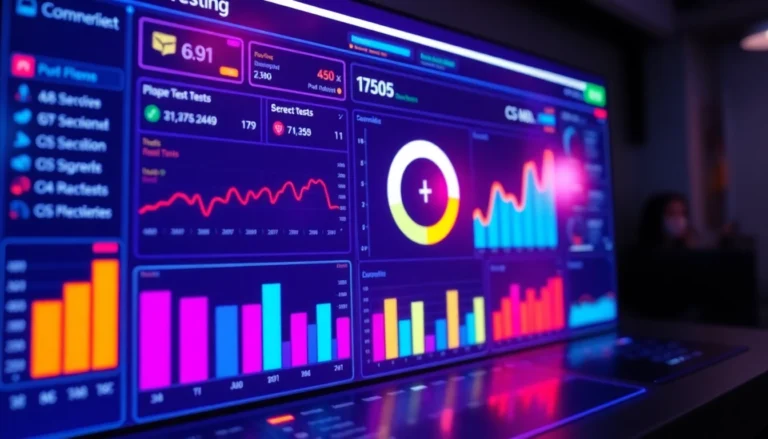Introduction to Crypto Mining: Fundamentals and How It Works
Cryptocurrency mining, commonly referred to as crypto mining, is the backbone of blockchain technology that enables the secure and decentralized operation of digital currencies. It is a complex process that involves validating transactions, maintaining the integrity of the blockchain, and generating new coins. With the surge in interest surrounding cryptocurrencies like Bitcoin and Ethereum, understanding the fundamentals of crypto mining has become essential for investors, technologists, and hobbyists alike. This comprehensive guide delves into what crypto mining entails, how it has evolved over time, and strategies for maximizing profitability while navigating legal and technological landscapes.
What Is Cryptocurrency Mining and Its Role on Blockchain
Defining Cryptocurrency Mining
At its core, crypto mining is the process by which transactions are verified and added to a blockchain—a distributed ledger that records every transaction across the network. Miners utilize high-powered computing devices to solve complex mathematical problems, known as Proof of Work (PoW), which confirms transaction authenticity. Successful miners are rewarded with newly minted coins and transaction fees, incentivizing the maintenance of system security and integrity.
The Role of Miners in Blockchain Security
Miners play a critical role in safeguarding the blockchain from malicious activities, such as double-spending or fraud. By competing to solve cryptographic puzzles, miners uphold the consensus protocol that ensures all participants agree on the transaction history. This decentralization prevents any single entity from exerting undue control, fostering trustless transparency in digital currency ecosystems.
Mining as a Consensus Mechanism
The consensus mechanism, typically PoW or alternative algorithms like Proof of Stake (PoS), determines how transactions are validated and blocks are added. Crypto mining primarily uses PoW, where computational work is done to produce a valid block. This process not only confirms transactions but also introduces new coins into circulation in a controlled manner, implementing the monetary policy of the cryptocurrency.
History and Evolution of Crypto Mining Technologies
Early Days: CPU Mining
Bitcoin’s inception in 2009 marked the beginning of crypto mining, initially performed using ordinary CPUs (Central Processing Units). Early miners could mine Bitcoin on personal computers with minimal investment, leading to rapid experimentation and community growth. However, as more miners joined and competition increased, the difficulty of mining rose sharply.
Transition to GPU Mining
In 2010-2011, miners shifted to Graphics Processing Units (GPUs), which offered massive parallel processing capabilities suited for mining specific algorithms like Scrypt used by Litecoin. GPUs dramatically increased mining efficiency and profitability, enabling small-scale miners to participate effectively.
The Rise of ASIC Mining
From around 2013 onward, Application-Specific Integrated Circuits (ASICs) revolutionized crypto mining by providing hardware designed specifically for mining algorithms such as SHA-256 (Bitcoin). ASICs deliver unparalleled processing power and energy efficiency but also introduced centralization concerns, as mining operations required significant capital for hardware investments.
Current Innovations and Trends
Modern mining employs advanced hardware cooling techniques, immersion cooling, and energy-efficient chips. Researchers and companies continue to innovate, aiming to make mining more sustainable and scalable. Additionally, alternative consensus algorithms like PoS seek to reduce the environmental impact inherent in traditional PoW systems.
Common Types of Mining Hardware and Their Functions
CPUs (Central Processing Units)
CPUs are versatile processors that initially powered early crypto mining. They are best suited for mining algorithms that favor general-purpose processing but are now largely obsolete for major cryptocurrencies due to low hash rates.
GPUs (Graphics Processing Units)
GPUs are highly parallel processors ideal for mining cryptocurrencies like Ethereum that utilize memory-intensive algorithms. They offer a good balance between cost and performance for small to medium-sized operations.
ASICs (Application-Specific Integrated Circuits)
ASICs are custom hardware tailored to specific mining algorithms. Bitcoin miners primarily use ASICs due to their superior speed and energy efficiency. However, ASICs lack versatility, being limited to specific coins or algorithms.
FPGAs (Field Programmable Gate Arrays)
FPGAs are programmable hardware options that can be configured for various algorithms, offering better energy efficiency than GPUs but less performance than ASICs. They are favored by niche miners seeking flexibility.
Summary of Hardware Choice Considerations
When selecting hardware, miners must consider factors such as initial cost, energy consumption, hash rate, algorithm compatibility, and scalability. Each hardware type has its niche, with ASICs dominating high-profit Bitcoin mining, while GPUs remain popular for pooled mining and altcoins.
Setting Up Your Crypto Mining Operations Effectively
Selecting the Right Hardware: GPUs, ASICs, and More
Effective crypto mining begins with hardware choices aligned with your goals and budget. For high-stakes Bitcoin mining, ASICs are generally indispensable, offering the highest hash rates and electric efficiency. Conversely, for exploratory or lower-budget operations, GPUs provide flexibility and lower entry barriers, especially for emerging altcoins with different mining algorithms.
Choosing a Mining Pool and Understanding Its Benefits
Mining pools are collective groups where participants combine their computational power to increase the chances of successfully mining blocks and sharing rewards proportionally. Engaging with a reputable mining pool reduces variance and provides steady income streams. Key factors include pool size, fee structure, payout methods, and transparency.
Environmental Considerations and Power Consumption Optimization
Crypto mining is energy-intensive, raising environmental concerns globally. Miners should evaluate energy sources, optimize hardware configurations, and implement cooling solutions to reduce electricity waste. Some strategies include using renewable energy, optimizing mining schedules during off-peak hours, and deploying energy-efficient hardware to maximize profitability while minimizing ecological impact.
Maximizing Efficiency and Profitability in Crypto Mining
Calculating Mining ROI and Profit Margins
To understand the financial viability of a mining operation, miners must perform comprehensive Return on Investment (ROI) calculations. This involves tracking hardware costs, electricity expenses, mining difficulty, cryptocurrency prices, and block rewards. Using tools like profitability calculators from platforms such as NiceHash can streamline this process and help identify the most profitable coins and hardware configurations.
Strategies for Reducing Costs and Increasing Earnings
Profitability depends heavily on controlling operational costs. Strategies include negotiating electricity rates, optimizing cooling systems, overclocking hardware within safe limits, and participating in staking or hybrid mining models. Staying informed about hardware advancements and market trends enables miners to upgrade or pivot to more profitable coins swiftly.
Keeping Up With Market Trends and Hardware Innovations
The crypto mining landscape is dynamic. Staying ahead involves continuous education, participation in industry forums, and monitoring emerging hardware developments like new ASIC models or alternative algorithms. Subscription to industry reports and attending conferences can provide insights into future trends, helping miners adapt proactively.
Legal, Security, and Future Trends in Crypto Mining
Legal Status and Compliance in Different Regions
Crypto mining legality varies worldwide. While countries like the U.S. generally allow mining with regulatory oversight, others impose restrictions or bans due to energy consumption concerns or regulatory policies. Miners must stay informed of local laws, tax implications, and licensing requirements to operate legally and avoid sanctions.
Best Practices for Securing Mining Operations and Assets
Security is paramount to prevent theft, fraud, and cyber-attacks. Implementing multi-layered security measures includes hardware wallets, secure network configurations, regular software updates, and robust authentication protocols. Staying vigilant against malware and phishing campaigns targeting miners is also critical.
Emerging Technologies and the Future of Crypto Mining
The future of crypto mining is geared toward sustainability and innovation. Quantum computing, alternative consensus mechanisms like Proof of Stake, and green energy integration promise to reshape the industry. Additionally, developments in cloud mining and decentralized platforms could democratize access and reduce geographical barriers.
Practical Tips and Resources for Beginner to Advanced Miners
Step-by-Step Guide to Starting Your Crypto Mining Journey
- Research and select a suitable cryptocurrency to mine based on profitability and hardware compatibility.
- Acquire the necessary hardware—consider ASICs for Bitcoin, GPUs for Ethereum, or adaptable FPGAs.
- Set up a secure digital wallet and join a reputable mining pool if preferred.
- Configure mining software tailored to your hardware and chosen coin.
- Optimize power and cooling systems to ensure hardware longevity and efficiency.
- Monitor performance metrics regularly and adjust settings as needed.
Recommended Software and Tools for Monitoring Performance
Industry-standard tools include CGMiner, BFGMiner, NiceHash, and MinerGate. These platforms provide real-time analytics, temperature monitoring, and remote management capabilities, enabling you to optimize operations proactively and troubleshoot issues efficiently.
Learning from Industry Experts and Community Networks
Engagement with online forums, social media groups, and industry conferences can provide valuable insights. Following industry leaders, reading whitepapers, and participating in webinars accelerates knowledge growth. Collaboration fosters new ideas and helps navigate evolving regulations and technological changes.















